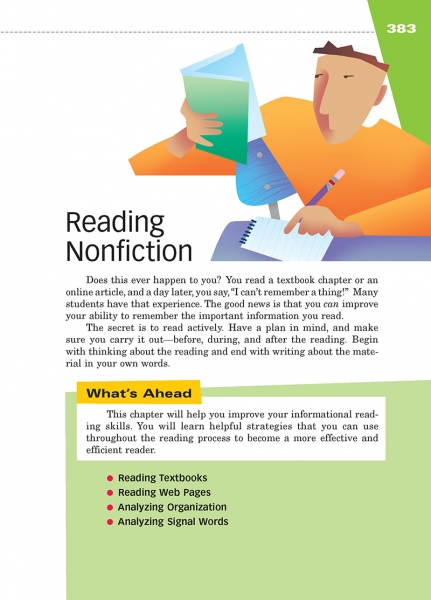Page 383 from

Start-Up Activity
Flash a series of traffic signs in front of your class, and have them read them aloud: "Stop," "Speed Limit 20," "Do Not Enter," "One Way," "Dead End," etc. (You can do this on cards or by projecting images on a screen.) Point out to students that, once they learn to read, words simply pour into them through their eyes. They can't help reading whatever words appear before them.
Still, that doesn't mean they will remember what they read. As they ride down a road, words pour in and they pour right back out again. Who could recount all the signs in order after a drive?
To hold onto the ideas that they read, students need to read actively. They need not only to let the words flow over them, but to capture and absorb the ideas. This chapter provides plenty of strategies to do so.
Think About It
“Reading furnishes the mind only with materials of knowledge; it is thinking that makes what we read ours.”
—John Locke

Start-Up Activity
Flash a series of traffic signs in front of your class, and have them read them aloud: "Stop," "Speed Limit 20," "Do Not Enter," "One Way," "Dead End," etc. (You can do this on cards or by projecting images on a screen.) Point out to students that, once they learn to read, words simply pour into them through their eyes. They can't help reading whatever words appear before them.
Still, that doesn't mean they will remember what they read. As they ride down a road, words pour in and they pour right back out again. Who could recount all the signs in order after a drive?
To hold onto the ideas that they read, students need to read actively. They need not only to let the words flow over them, but to capture and absorb the ideas. This chapter provides plenty of strategies to do so.
Think About It
“Reading furnishes the mind only with materials of knowledge; it is thinking that makes what we read ours.”
—John Locke